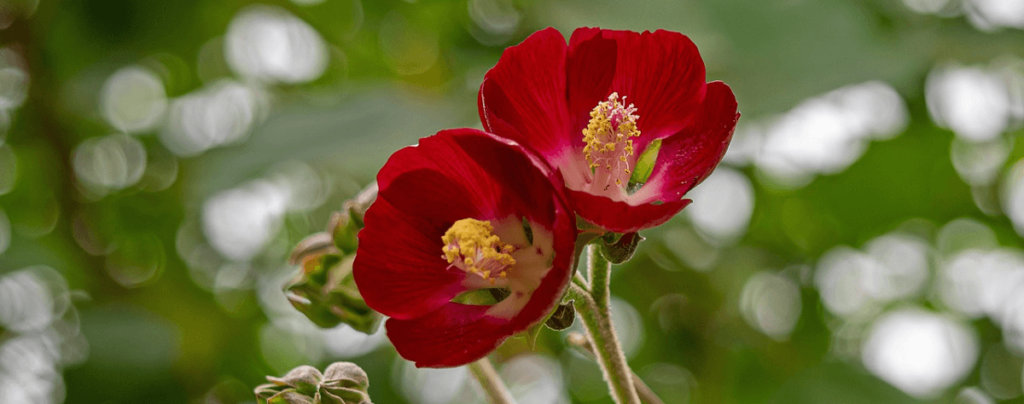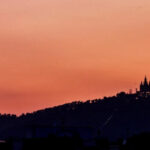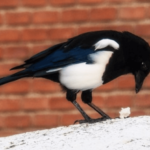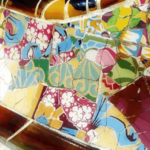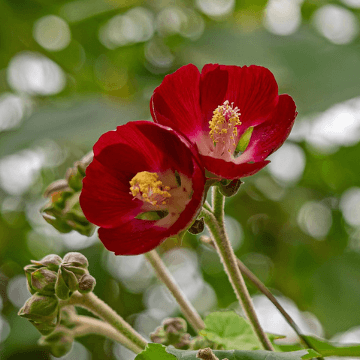
You need to visit these botanical gardens and parks in Barcelona
A CURATED LIST OF THE BEST BARCELONA GARDENS
Being a densely populated and tightly built European city, about 3.5% of the surface of Barcelona are green areas. About half of it belong to the Collserola forests, and the rest is urban greenery – over 75% in public spaces (data from this study from 2015 in Catalan).
The city features some 90 parks and gardens. Two of them qualify as “forest parks”: large sections of the city that can include smaller parks and even residencial areas and other facilities within it. They are the Parc de Collserola and the Parc de Montjuic.
There’s a dozen of historical parks, and a handful of themed botanical gardens. And the rest are urban parks and public landscaped interiors of city blocks. And almost 200 trees are included in the Catalog of Trees of Special Interest for its age, uniqueness, historical value or size.
All this makes Barcelona an excellent destination for parks and botany lovers. So in this post we have selected the best botanical gardens and parks to visit, so you can add some greenery and color to your trip. Note: Unless otherwise stated, these parks and gardens are open every day during normal business hours and the entrance is free of charge.
Most beautiful parks of Barcelona
1
Parc de la Ciutadella
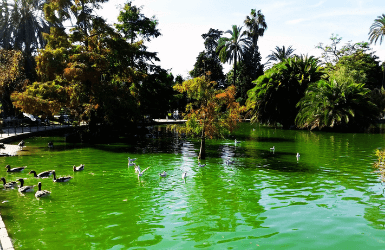
The largest park of Barcelona (17.42ha / 43 acres, but almost twice as much if we count the premises of the Zoo) was for many years "the park" of Barcelona, the one and only. Its name comes from the old fortress or citadel that occupied the land after the War of Succession in 1714.
After the demolition of the fortress, the architect Josep Fontsere planned this garden after the Parisian Jardins du Luxembourg. In 1888 the park hosted the first world fair of Barcelona, and some of the structures of the fair are still in place.
There’s over 100 different types of trees and bushes, many of them planted over 100 years ago. Some are also included in the city catalog of trees of special interest: a maclura, some taxodiums, an acacia and a quercus polymorpha. In the zoo lives also the largest urban colony of grey herons in Europe, and they can often be seen in the park lake.
LOCATION: Between the Born district and the Eixample, very close to the Picasso Museum and the Arch of Triumph.
Learn more about it >>
2
Park Guell, the Gaudi Park
Gaudi had time to build a monumental main entrance flanked by colorful pavilions in front of a grand staircase decorated with fountains, a columns room, a plaza surrounded by a mosaic bench and a few viaducts.
In the 1900’s the heirs of Count Guell sold the land to the Barcelona city council, and so what had been a private property became a public park. Nowadays, the access is paid except for the neighbors, that are entitled to a special pass. It is definitely one of the most famous parks in Barcelona, and a top must-see site.
LOCATION: Top of the Gracia district.
Plan your visit >>
Buy tickets here >>
3
Parc del Laberint d'Horta
The park was visited by the Spanish royals: Charles V, Ferdinand VII and Alfons XIII. In 1968 the Desvalls family sold the property to the Barcelona city council, since it was too expensive for them to maintain it. Nowadays there’s a small entrance fee to access it, except on Wednesdays and Sundays.
The cypress labyrinth has one single entrance and one exit. The goal is finding the sculpture of Eros located in the middle before finding the way out. It’s large enough to get lost in it for a while, just enough to feel the thrill of adventure without risking having to spend the night in there.
LOCATION: Top of the Horta district.
Learn more about it >>
4
Jardins Laribal
These quiet gardens include a cypress tree gazebo, a small rose garden, pergolas covered with vines, sculptures and steps inspired in those from the Generalife Gardens in Granada (Spain).
LOCATION: Hill of Montjuic. Pair it with a visit to the nearby Miro Foundation or plan to eat at the restaurant of the park.
Learn more about it >>
5
Jardins de Mossen Cinto Verdaguer
Every year over 80.000 bulbs of different species are planted here, between grass patches and water ponds with water lilies.
LOCATION: Hill of Montjuic. Pair it with a visit to the nearby Miro Foundation, the Montjuic Cable Car or the Montjuic Castle.
Learn more about it >>
6
Jardins de Pedralbes
Its designer was Rubió i Tudurí, which we have also mentioned before. Plus the gardens hide two early works of Antoni Gaudí: a small fountain with a wrought iron shaped as a dragon, and a pergola made of hyperboloid arches.
There’s also a Kolonihaven by Enric Miralles and Benedetta Tagliabue. From the botanic point of view stand out the Himalayan, Atlas and Japanese cedars, an ancient pine tree and a Sictus tree.
LOCATION: Pedralbes area. Pair it with a visit to the FC Barcelona stadium or the Gaudi Dragon Gate of the Finca Guell.
Learn more about it >>
7
Turo Park (aka Eduard Marquina gardens)
This park occupies the grounds of an old amusement park that closed in 1929. Again, it was Nicolau Rubió i Tudurí who rearranged it as a garden, nowadays mostly used by the neighbors of this exclusive district. It’s a haven of peace, with high frees, a pond with water lilies, a prairie and several sculptures.
LOCATION: Bonanova neighborhood. If you go, don’t miss some of the best chocolates in town, from the nearby Oriol Balaguer shop.
Learn more about it >>
8
Jardins de l'Universitat de Barcelona or de Ferran Soldevila
There are 4 itineraries that help you discover the over 250 species cultivated here: City trees, Mediterranean trees, Primitive flowering plants and Plats of great usefulness. The students of Pharmaceutical Botany run a project of inventory of this “living collection”, that includes among other a yew and a gingko both over 100 years old.
LOCATION: Between the Raval and the Eixample. District.
OPENING HOURS: Mon-Fri (except holidays), from 8AM to 9.30PM.
Learn more about it >>
9
Jardins de Joan Maragall (or del Palauet Albeniz)
The French landscape designer Nicolas Forestier designed this gardens around the Royal Pavilion of the 1929 World Fair. The premises were both a place for King Alphonse XIII to organize receptions as well as to rest during his stay. Nowadays it’s still used by the Royals and the local authorities for special events.
After the Fair the building was meant to host the Museum of Music, which is why often the gardens are called after the Musician Isaac Albeniz.
However, the project was never completed and in 1979, when the gardens were expanded, they were renamed after the Catalan poet Joan Maragall, to follow the trend of two other Montjuic parks named after poets: Mossen Costa i Llover and Mossen Cinto Verdaguer.
The park follows a classic and French style, with sculptures, ponds with water jets, waterfalls, staircases and avenues lined up with lime and magnolia trees. There’s also a unique specimen of jujube tree. The views over Barcelona are quite spectacular, too.
LOCATION: Hill of Montjuic. Pair it with a visit to the nearby Miro Foundation, the MNAC Museum or the Olympic Stadium.
OPENING HOURS: Saturday, Sunday and holidays, from 10AM to 3PM.
Learn more about it >>
10
Parc de la Tamarita
The park is divided in two sections: the lower area is mostly dedicated to playground and leisure facilities, while the upper part is features the classic garden with fountains, ponds, sculptures and flower beds.
LOCATION: Sant Gervasi / Tibidabo district. Check it out on your way to the Tibidabo Hill or the Cosmocaixa Museum, or if you are eating in the Michelin star restaurant Abac.
Learn more about it >>
Botanical gardens of barcelona
The Encyclopedia Britannica describes a botanical garden as a collection of living plants designed chiefly to illustrate relationships within plant groups. Wikipedia adds that its goal is to collect, cultivate, preserve and display a wide range of plants.
Two of the parks I mentioned in the previous section match this description too: the Ciutadella Park and the University Gardens. But because of their architectural importance I preferred to include them in the parks section instead. Here are the other Barcelona botanical gardens:
11
Barcelona botanical garden
It specializes in Mediterranean species from all over the world. Because areas as distant to the Mediterranean Sea such as California, Australia, Chile or South Africa. have similar climates and their flora has evolved in similar ways to adapt to the environment.
Spring and Autumn are the best times to visit: Spring because it’s the blooming season of most species, and Autumn because of the berries and colors of the leaves – some yellow and brown, contrasting from the vivid green of the evergreen plants. Portuguese squills, Port Jackson Fig trees, aloes and banksias are some of its most remarkable specimens.
LOCATION: Hill of Montjuic. Pair it with a visit to the nearby Olympic Stadium.
PAID ENTRANCE. Check this city pass that includes it >>
Learn more about it >>
12
Historical botanical gardens
This little known botanical treasure is located in a hidden shady area in the premises of some old stone quarries. The temperature there is some 4ºC / 39F colder than the rest of the area, what allows the cultivation of plants from colder climates.
In 1930 the scientist Pius Font i Quer was charged with an ambitious project of a botanical garden in the old Foixarda quarries and beyond. Unfortunately, the Spanish Civil War started in 1936 and with the Franco dictatorship Font i Quer fell in disgrace.
In 1940 the pharmacist Antoni de Bolos took over the project, that would never go beyond the space of 2 quarries, only 20% of the original project. He introduced new plants, officially inaugurating the garden one year later. His main achievement was recovering an extinguished plant: the Lysimachia minoricensis, still present in the garden nowadays. Another interesting specimen is an old camphorwood.
In 1986 the construction works of the Olympic facilities nearby affected the stability of the quarries, and the botanical garden was closed to the public until it was reopened in 2003, four years after the inauguration of the new Jardi Botanic de Barcelona.
LOCATION: Hill of Montjuic. Pair it with a visit to the nearby MNAC Museum or the Olympic Stadium.
Learn more about it >>
13
Rosaleda Cervantes (Cervantes Rose Gardens)
May thru July are the best months to see the roses in full bloom, with a pick of some 150,000 roses blossoming simultaneously. However, the garden also incorporates species that bloom during other seasons of the year so visitors get to see roses no matter when they visit. Every year the garden organizes an international contest of new roses (hybrids), and the winner varieties are incorporated to the collection.
LOCATION: Pedralbes area. It is some 15 minutes walk from the Jardins de Pedralbes and 20 from the FC Barcelona stadium.
Learn more about it >>
14
Jardins de Mossen Costa i Llovera
The garden is the result of the efforts of the architect Joaquim Maria Casamor and the cacti specialist Joan Pañella, and they were inaugurated in 1970. In 1987 the New York Times included it in their list of 10 best parks in the world – which was an honor considering that the last couple of winters had been considerably cold and around 40% of the collection hadn’t survived the low temperatures.
Don’t miss the forest of giant Euphorbia, the Dracaena Dragos, the many aloes, the Australian Xanthorrea that need wildfires to reproduce, and the huge echinocactus – that Mexican call “mother-in-law chairs”.
LOCATION: Hill of Montjuic. Take the Aeri del Port cable car to reach it, and enjoy lunch with views over the port at the nearby Martinez restaurant.
Learn more about it >>
Our recommended Barcelona hotel for garden lovers:
What are your favorite Barcelona parks and gardens?
Marta
MORE BARCELONA TIPS FOR YOU:
SHARE WITH YOUR TRAVEL MATES
RESEARCHING FOR A TRIP IS TIME-CONSUMING…
Need more inspiration?
Our 100% FREE Barcelona Collection will give you everything you need to organize the trip of your lifetime to Barcelona.
BEST INSIDER TIPS FROM THE PROS!

Last update on 2024-04-26 / Affiliate links / Images from Amazon Product Advertising API

